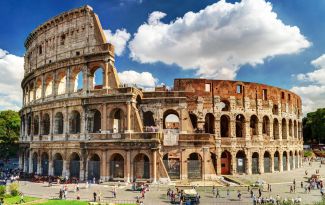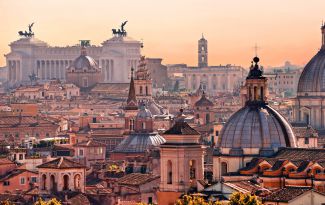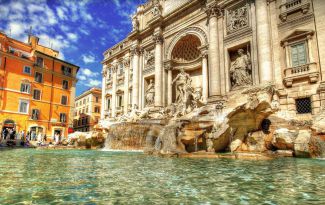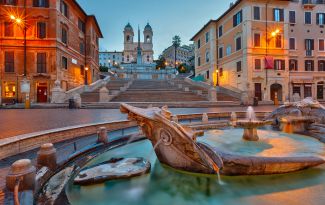Roma Caput Mundi
Rome
Rome never ceases to amaze and inspire awe due to its uniqueness. It boasts a rich historical, cultural, and architectural heritage, making it one of the greatest masterpieces ever created by humanity. Rome is consistently regarded as the quintessential global tourist destination that everyone wishes to visit at least once in their lifetime. The city is steeped in history and exudes an unforgettable charm. Here are just three of the must-see masterpieces in the city:
Colosseum
The Colosseum consists of four floors: the first three are punctuated by arches, 80 in total, while the fourth floor is taller and features a more compact structure with windows. These arches are supported by columns with semi-Doric, Ionic, and Corinthian styles. Inside, the staircases had a seating capacity of about 50,000 people, and in case of bad weather, they could be covered with a roofing system made of strips of cloth, operated by a hundred sailors. It is the largest amphitheater in the Roman world.
The Colosseum consists of four floors: the first three are punctuated by arches, 80 in total, while the fourth floor is taller and features a more compact structure with windows. These arches are supported by columns with semi-Doric, Ionic, and Corinthian styles. Inside, the staircases had a seating capacity of about 50,000 people, and in case of bad weather, they could be covered with a roofing system made of strips of cloth, operated by a hundred sailors. It is the largest amphitheater in the Roman world.
Trevi Fountain
The Trevi Fountain is the most famous fountain in Rome, designed by architect Salvi in 1735 during the papacy of Clement XII. It is one of the most beautiful fountains in the world. Situated in the square of the same name, not far from Via del Corso, it is undoubtedly one of the most visited spots in Rome. Thousands of people visit this masterpiece daily, with the tradition of tossing a coin into the fountain, as legend has it that this ensures a return to Rome in one's lifetime. Federico Fellini's film "La Dolce Vita" contributed significantly to enhancing the worldwide fame of this fountain.
The Trevi Fountain is the most famous fountain in Rome, designed by architect Salvi in 1735 during the papacy of Clement XII. It is one of the most beautiful fountains in the world. Situated in the square of the same name, not far from Via del Corso, it is undoubtedly one of the most visited spots in Rome. Thousands of people visit this masterpiece daily, with the tradition of tossing a coin into the fountain, as legend has it that this ensures a return to Rome in one's lifetime. Federico Fellini's film "La Dolce Vita" contributed significantly to enhancing the worldwide fame of this fountain.
St. Peter's Basilica
Located in Vatican City, an independent state within Italian territory, St. Peter's Basilica overlooks St. Peter's Square and is a masterpiece by Bernini. It was founded in 324 by Constantine, and in 1506, work began on Bramante's project to transform the basilica. In addition to Bramante, other renowned architects like Raphael, G. Sangallo, Peruzzi, and A. da Sangallo contributed to its construction. Michelangelo took over in 1547 and is responsible for the apse and the dome, the largest ever built in masonry. Maderno's façade, commissioned by the Pope, turned the original Greek cross plan into a Latin cross.
Located in Vatican City, an independent state within Italian territory, St. Peter's Basilica overlooks St. Peter's Square and is a masterpiece by Bernini. It was founded in 324 by Constantine, and in 1506, work began on Bramante's project to transform the basilica. In addition to Bramante, other renowned architects like Raphael, G. Sangallo, Peruzzi, and A. da Sangallo contributed to its construction. Michelangelo took over in 1547 and is responsible for the apse and the dome, the largest ever built in masonry. Maderno's façade, commissioned by the Pope, turned the original Greek cross plan into a Latin cross.
Let me know if you need any further assistance or have any questions!
Accommodations in this area:

Selva Candida - Roma

Tiber View - Rome

Tiber Nicosia - Rome

Ecce Roma Suites - Roma

Domus Crescenzio - Roma

Borgo Pallavicini Mori

Design.aTA Boutique Hotel - Roma

Reginella Suites - Roma

Giubbonari Suites - Roma

Arenula Suites - Rome

Casa Rinaldi - Poggio Mirteto, Rieti

Albergo del Sole al Pantheon - Rome

Casa Mira - Rome

Agriturismo Casale di Colle - Rome

Boutique Hotel Casa Fabbrini - Roma








